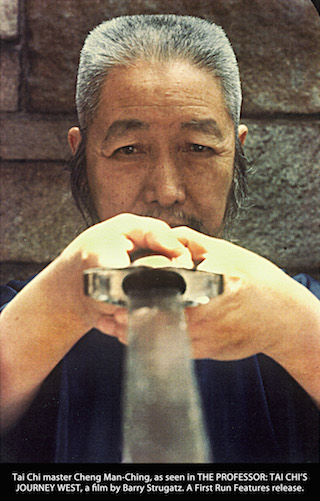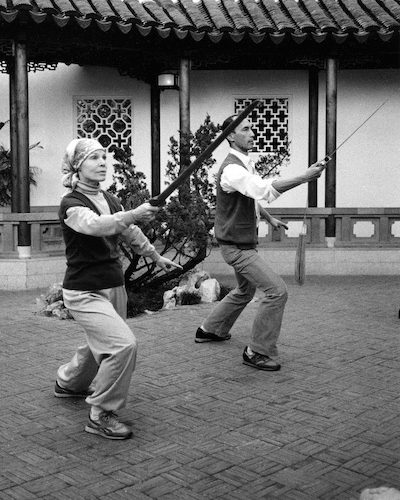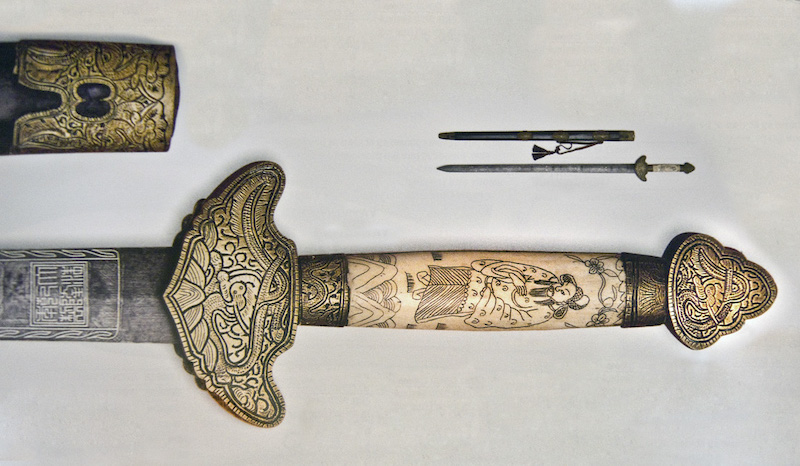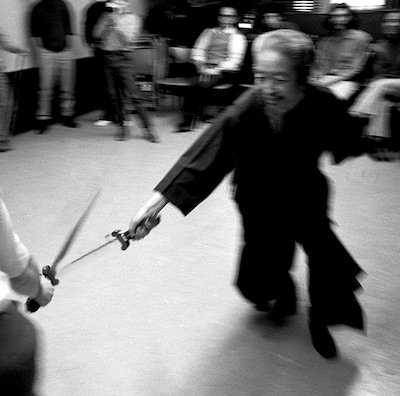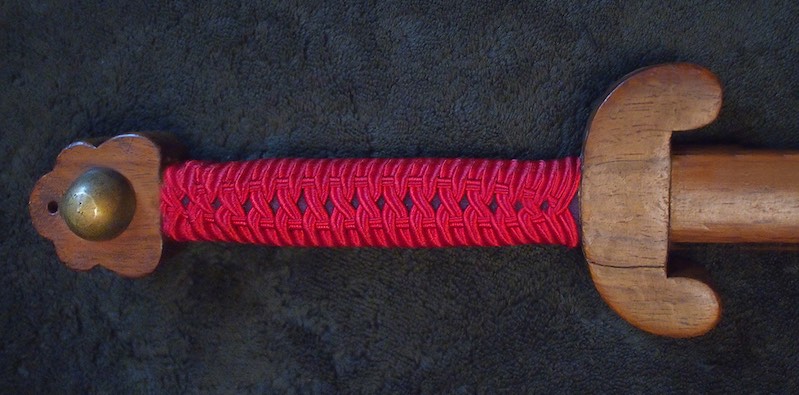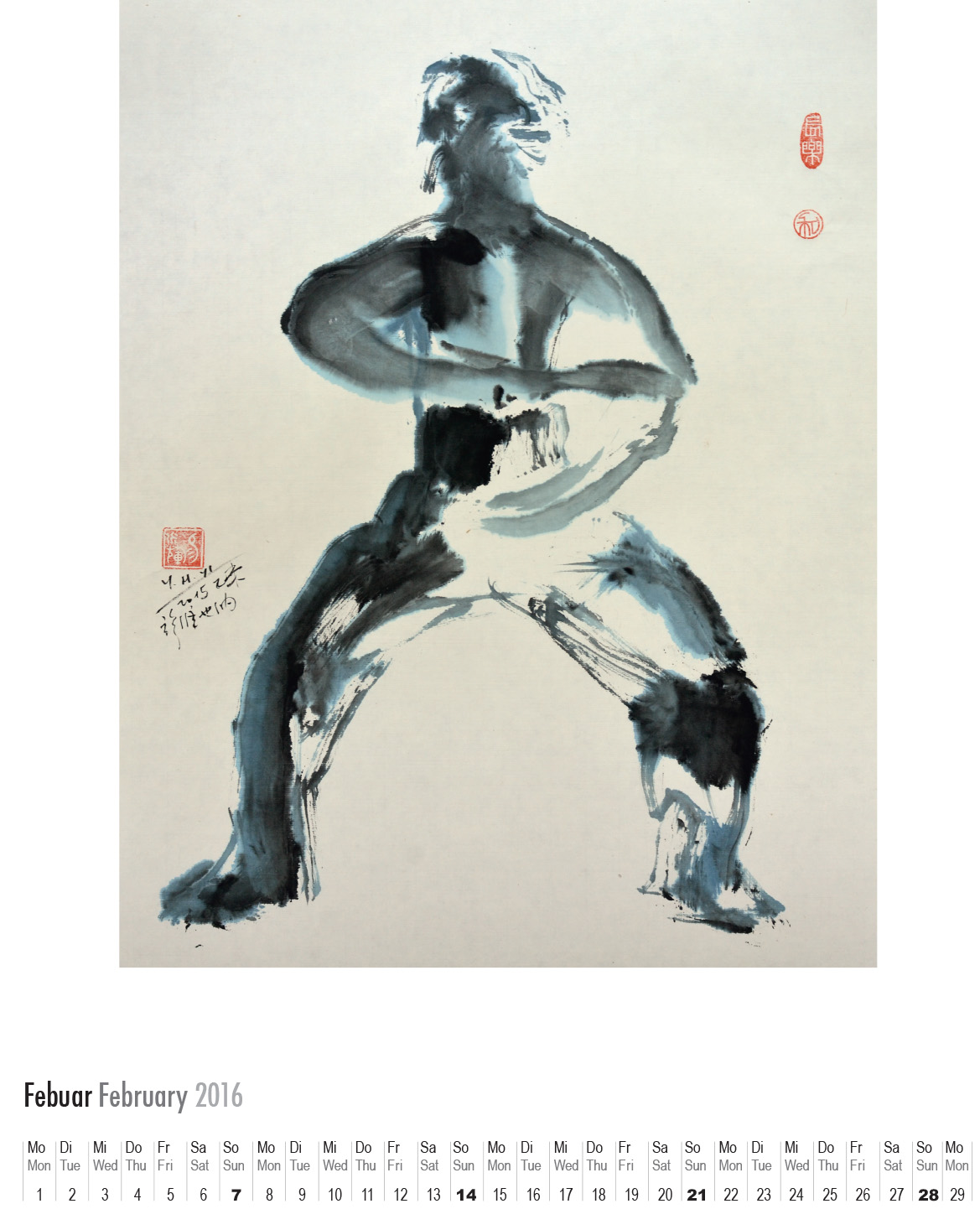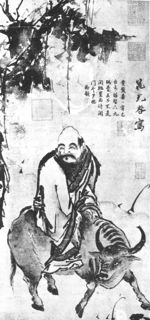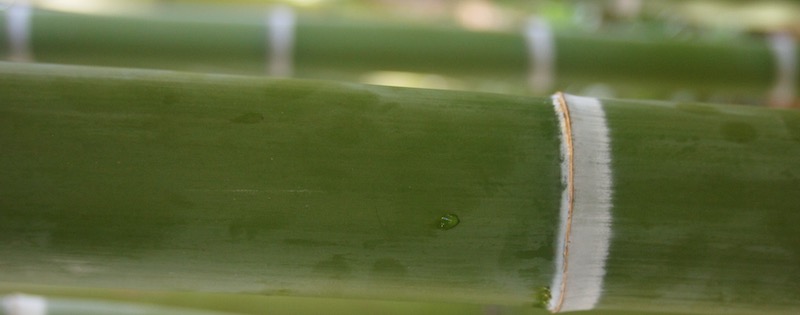Sword strategies
- We get strength from our centre, speed from the O.
- When neutralising, we let the O’s blade barely miss us, so that his realisation that he has missed is delayed.
- If the O shows a weak grip, use one of the disarming techniques, as in the kicks before the 3 jumps and “Tiger Wags Tail”.
- If the O offers you his sword handle, contact (don’t grab) it with your left hand, then you will have an opportunity to cut. You may also simply take his sword, or slap it out of his hand.
- When the O’s blade touches us in a cut or thrust, we should touch that place with our left hand, as an acknowledgement.
- It is not for us to impose our will on the O, but to allow the O to impose his will on himself.
- Get out of the way and as you do, lead the O out of centre, off balance.
- hat which we resist, persists. What we accept, we can own or delete.
- Turn the other cheek, but turn it from your centre.
- Ride the wave of the O’s energy.
- Strategies, Tactics and Techniques must be responses to a particular action of the O. Execute them but don’t entertain them.
- While fencing, to have a thought, is to be cut.
- Who favours one side of the blade, will be cut on the other.
- Don’t play to win, play to evolve.
- Stick, adhere, follow, listen and interpret.
- Neither a barrier nor a parrier be.
- The sword form is done faster than the solo form, and the footwork is similar to that of Bagua; the rooting is lighter while using the sword, but should develop fully when a strong neutralization or cut is executed. The sword itself is rooted in the hand, the grip must be firm enough so that the sword cannot be taken, and the wrist and arm must be resilient enough so that a strong beat will not knock the sword out of the hand, but allow it to spiral on its centre, and return to cut.
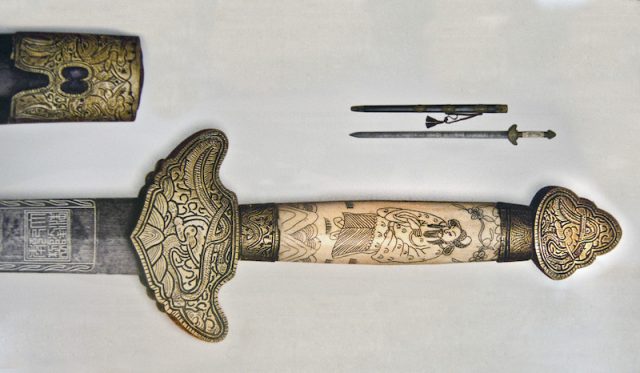
Author and Images: Ken van Sickle
German version on our sister site!
- ON BEING A MASTER – Tai Chi Sword 53
- STRANGERS – Tai Chi Sword 52
- PADDED SWORDS – Tai Chi Sword 51
- SAFETY – Tai Chi Sword 50
- PARALLELS – Tai Chi Sword 49
- Swordsmanship – SEVEN QUOTES – Tai Chi Sword 48
- TI FENG & FA JING – Tai Chi Sword 47
- SUPPOSITIONS – Tai Chi Sword 46
- LAO TZU (Laozi) QUOTES – Tai Chi Sword 45
- ETIQUETTE – Tai Chi Sword 44
- FENCING PROCESS – Tai Chi Sword 43
- STRATEGIES – Tai Chi Sword 42
- TASSELS IN THE WIND – Tai Chi Sword 41
- SHOOT FLYING GOOSE – Tai Chi Sword 40
- RHINOCEROS GAZES AT MOON – Tai Chi Sword 39
- THE MASTER SITS BACK – Tai Chi Sword 38
- FIVE APPLICATIONS – 1. BLOCK AND SWEEP – Tai Chi Sword 37
- RULES OF ENGAGEMENT – Tai Chi Sword 36
- CONSIDER – Tai Chi Sword 35
- INVITATIONS – Tai Chi Sword 34
- THE TASSEL – Tai Chi Sword 33
- THE SWORD FINGERS – Tai Chi Sword 32
- Cheng Man Ching Photographs
- THE JOINTS – Tai Chi Sword 31
- THE GRIP – Tai Chi Sword 30
- SWORD MOVEMENT – Tai Chi Sword 29
- ON ALIGNMENT – Tai Chi Sword 28
- CONCERNING THE CENTRE – Tai Chi Sword 27
- EQUATIONS – Tai Chi Sword 26
- HSIN AND CHI – Tai Chi Sword 25
- On studying – NINE QUOTES – Tai Chi Sword 24
- THE SWORD MAIDENS – Tai Chi Sword 23
- THE SWORD AND CALLIGRAPHY – Tai Chi Sword 22
- Returning – MORE THOUGHTS – Tai Chi Sword 21
- Levels of TAI CHI SWORD – Tai Chi Sword 20
- FENCING – Tai Chi Sword 19
- Transcendence – Tai Chi Sword 18
- TURNING TRICKS – Tai Chi Sword 17
- Names of CHENG MAN CH’ING’S TAI CHI SWORD – Tai Chi Sword 16
- FORCE – Tai Chi Sword 15
- DIFFERENCES – Tai Chi Sword 14
- BEGINNERS’ MISTAKES – Tai Chi Sword 13
- MIND SETS – Tai Chi Sword 12
- SENSITIVITY – Tai Chi Sword 11
- HARMONY – Tai Chi Sword 10
- TIME AND HUMOUR – Tai Chi Sword 9
- WHY AND HOW – Tai Chi Sword 8
- SWORD DIMENSIONS – Tai Chi Sword 7
- A ROYALTY OF ARMS – Tai Chi Sword 6
- KENNETH VAN SICKLE – Tai Chi Sword 4
- CHENG MAN CH’ING – Tai Chi Sword 5
- PREFACE – Tai Chi Sword 3
- Introductory Thoughts – Tai Chi Sword 2
- EDITOR’S PREFACE -Tai Chi Sword 1
- Tai Chi Sword by Kenneth van Sickle

